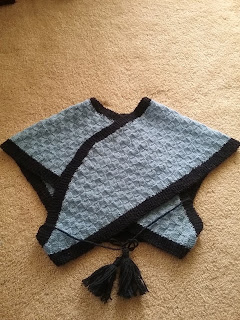From page 189: Soft pomatum Take 25 pounds of hog's lard, 8 pounds of mutton suet, 6 ounces of oil of Bergamot, 4 ounces essence of lemons, half an ounce of oil of lavender, and a quarter of an ounce of oil of rosemary. These ingredients are to be combined in the manner as those for the hard pomatum. This pomatum is to be put up in pots in the usual way.
Not needing thirty pounds of hair product, I scaled this down to a mere ten ounces (8 oz lard to 2 oz tallow, having no ready source for suet).
 |
| Solid lard and tallow. |
The process was very straight forward: I melted to the two fats together over low heat, allowed the solution to cool for a few minutes, then stirred in the scents, poured the liquid into tins, and set it aside to solidify. Excluding the final cooling/hardening, the process took about fifteen minutes.
 |
| The fats melted quickly over low heat. |
For the scent, I maintained the 24:12:2:1 ratio, but as I was working at ~1/50 scale, I didn't try to calculate miniscule fractions of ounces. Instead, I opted to use 2 drops of rosemary essence and adjust from there (4 drops of lavender, 24 of lemon, 48 of bergamot). This amount seems to work well, imparting a notable, but delicate, odor.
 |
| The final liquid was faintly yellow and translucent. |
Batch size note: the 10 ounces of fat (by weight) exactly filled the three 4-fl-oz tins I had prepared.
 |
| The pomatum grew opaque and white as it solidified. |
The final pomatum is somewhat softer than the one I previously used. Where that one was a solid, and needed to be rubbed on the fingers to liquefy it for use, this pomade is ready to go--if it was any softer, it'd be liquid. I'm a little concerned about how it'll fare during the summer heat (both in use and in its container), but am optimistic that it will be easy to use and won't leave tiny white specks behind in my hair, as happened when the other pomade aged and separated.
Update: Having now used this pomatum, I am pleased to report that it soldified still further, and was a perfectly nice consistency when I went to use it. The melting point of the combined fats is just around body temperature, so very little friction was needed to work it into my hair. My hair styled easily (as much as it ever does) on the first and second day, after which the pomatum washed out easily with shampoo. The scent proportions I used seemed fine to me; if anything, it was a hair strong, and I would be tempted to try it with half of the oils (1:2:12:24) to compare. That being said, one of my friends still thought that the tin of pomatum smelled too strongly of lard.














